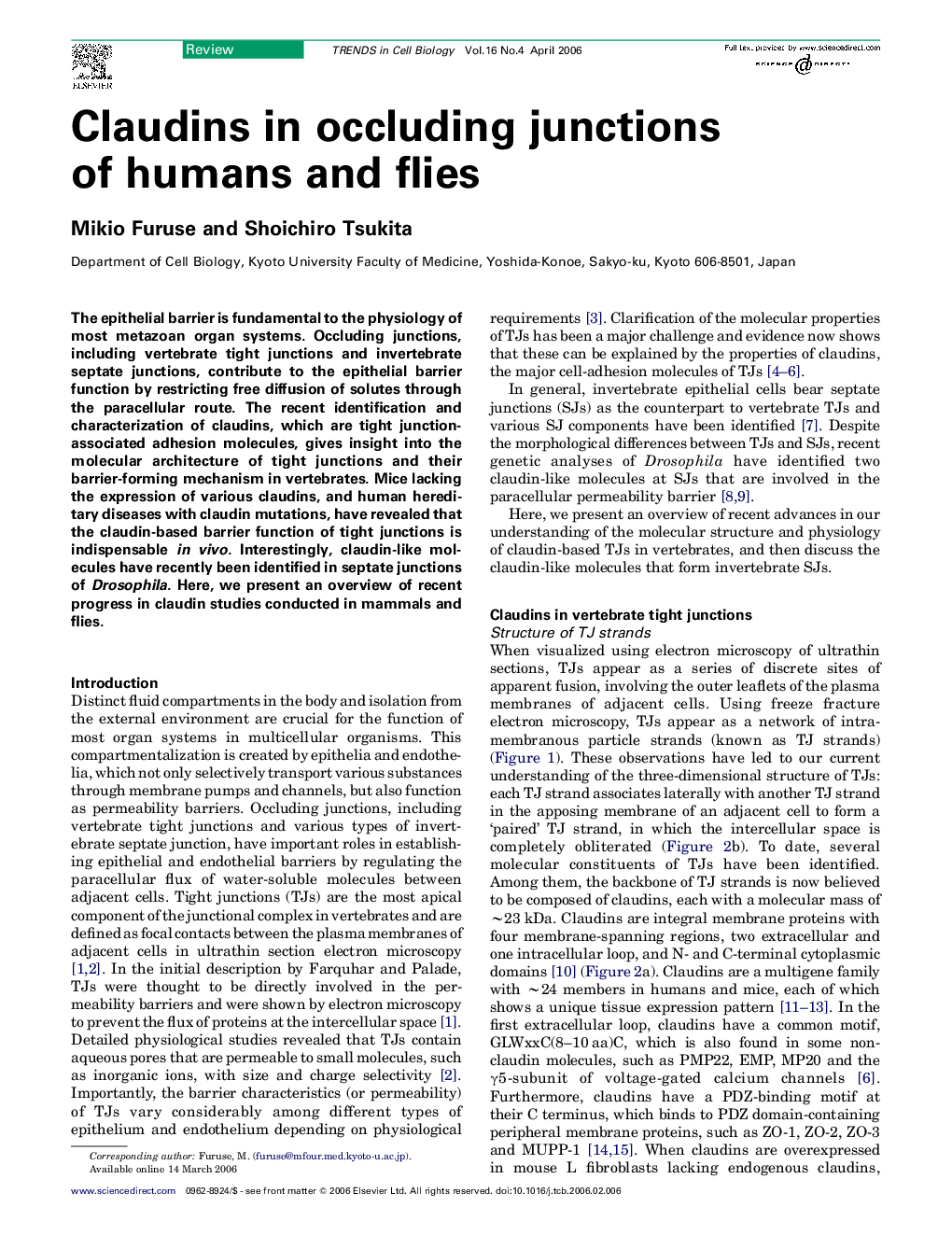| Article ID | Journal | Published Year | Pages | File Type |
|---|---|---|---|---|
| 2205243 | Trends in Cell Biology | 2006 | 8 Pages |
The epithelial barrier is fundamental to the physiology of most metazoan organ systems. Occluding junctions, including vertebrate tight junctions and invertebrate septate junctions, contribute to the epithelial barrier function by restricting free diffusion of solutes through the paracellular route. The recent identification and characterization of claudins, which are tight junction-associated adhesion molecules, gives insight into the molecular architecture of tight junctions and their barrier-forming mechanism in vertebrates. Mice lacking the expression of various claudins, and human hereditary diseases with claudin mutations, have revealed that the claudin-based barrier function of tight junctions is indispensable in vivo. Interestingly, claudin-like molecules have recently been identified in septate junctions of Drosophila. Here, we present an overview of recent progress in claudin studies conducted in mammals and flies.
